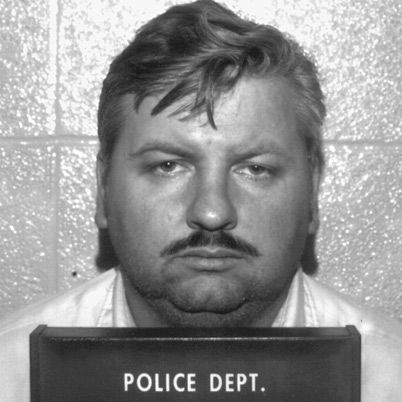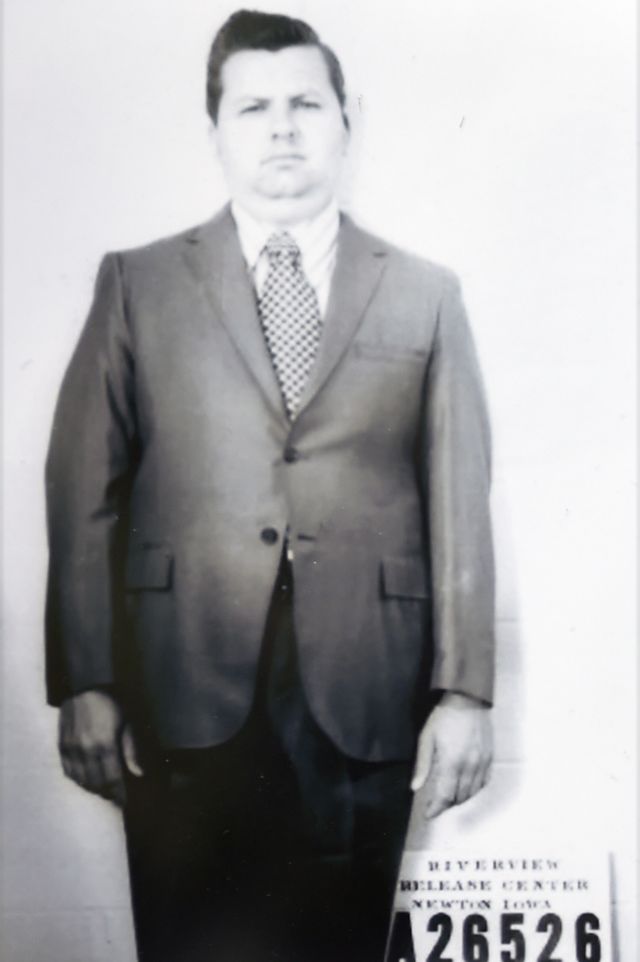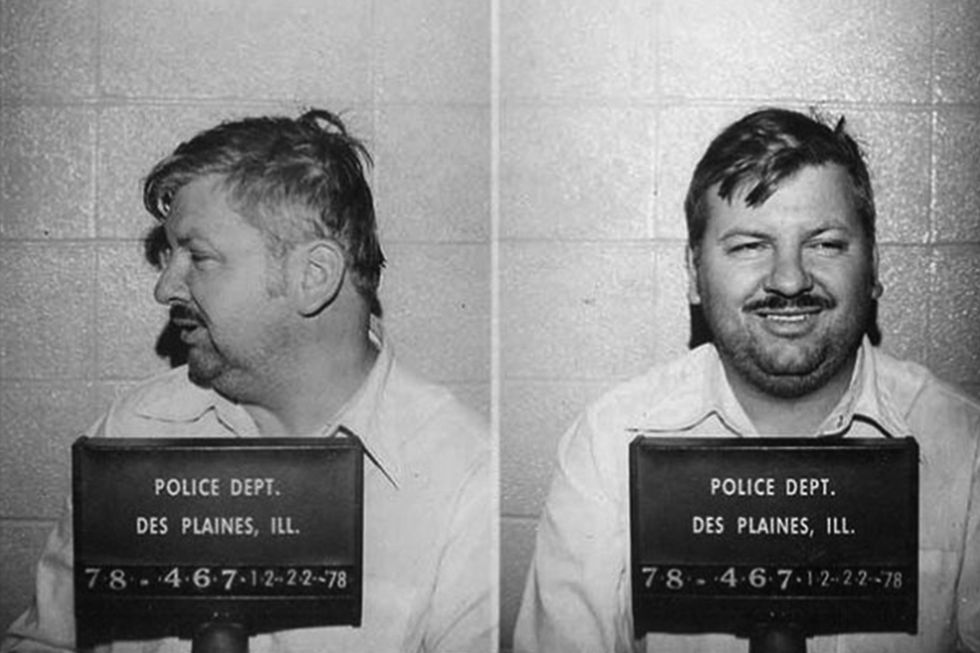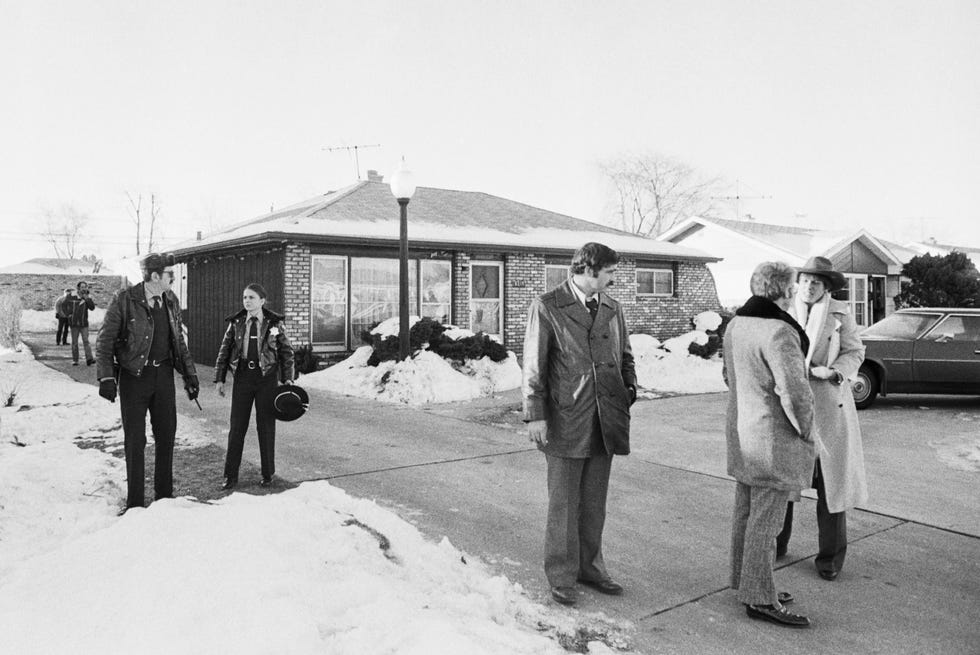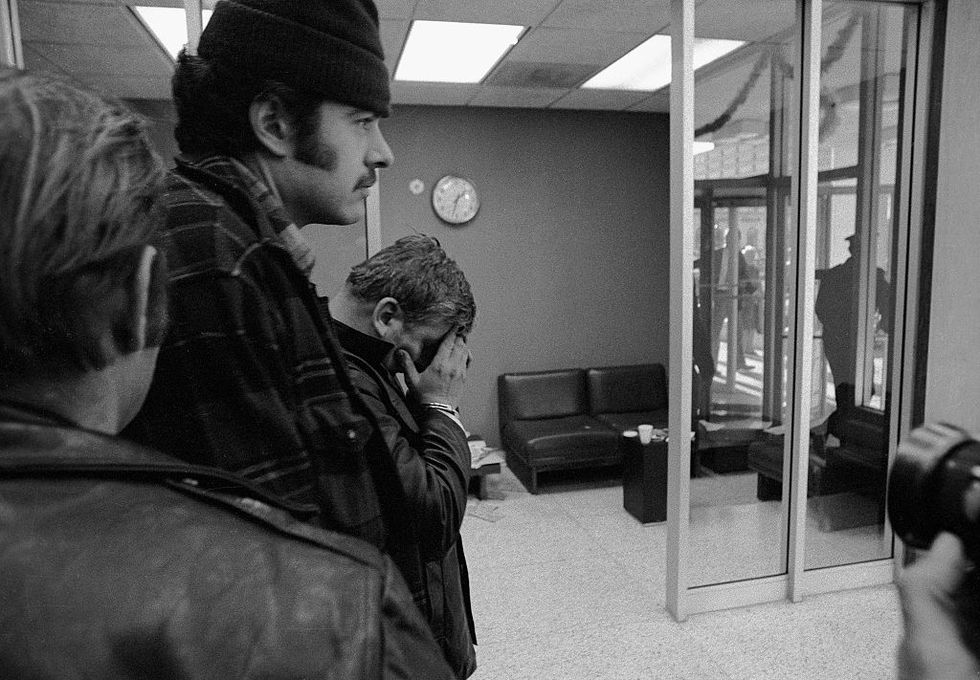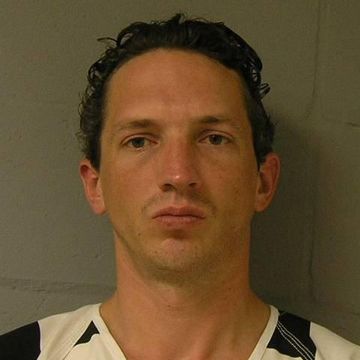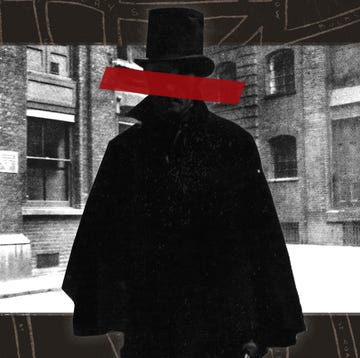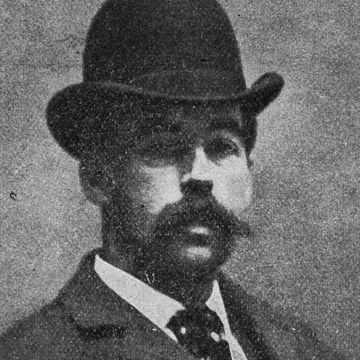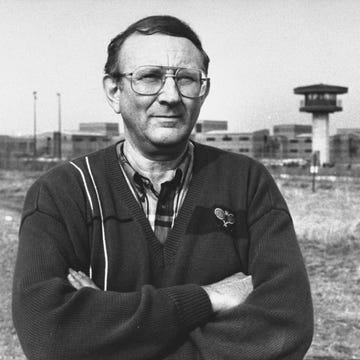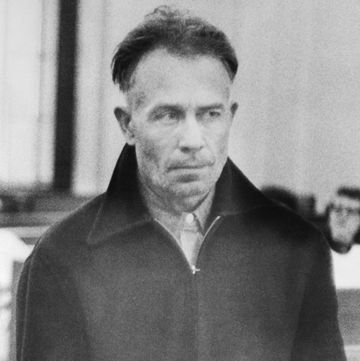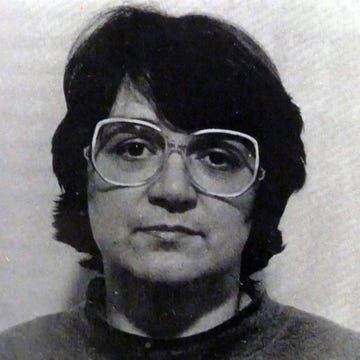1942-1994
Who Was John Wayne Gacy?
John Wayne Gacy was a serial killer and rapist who murdered at least 33 teenage boys and young men in Cook County, Illinois, burying most under his house. Sometimes known as the “Killer Clown” for his habit of dressing in a clown costume and makeup, Gacy had an abusive childhood and struggled with his homosexuality. Gacy committed all the murders in his Norwood Park home, luring his victims there with the promise of construction work or some other ruse, then sexually assaulting and torturing them before killing them, usually by strangulation. Gacy was arrested in 1979, and the following year, he was convicted of 33 murders. Gacy was executed in 1994.
Quick Facts
FULL NAME: John Wayne Gacy
BORN: March 17, 1942
DIED: May 10, 1994
BIRTHPLACE: Chicago, Illinois
SPOUSES: Marlynn Myers (1964-1969) and Carole Hoff (1972-1976)
CHILDREN: Michael and Christine
ASTROLOGICAL SIGN: Pisces
Childhood
John Wayne Gacy was born on March 17, 1942, in Chicago to John Stanley Gacy and Marion Elaine Robison. His father, an auto repair machinist and World War I veteran, struggled with alcoholism and beat John and his two sisters with a razor strap if they were perceived to have misbehaved. John’s father frequently belittled him, calling him stupid and comparing him disparagingly to his sisters, according to Johnny and Me: The True Story of John Wayne Gacy by Barry E. Boschelli.
Gacy’s psychosexual history began between the ages of 6 and 10, when a teenage daughter of one of his mother’s friends reportedly undressed and played with him, according to Killer Clown: The John Wayne Gacy Murders by Terry Sullivan. Gacy was molested at a young age by a family friend and contractor, and between ages 10 and 12, Gacy and a friend were accused of sexually fondling a young girl, according to Sullivan.
A sickly, overweight, uncoordinated child, Gacy was unable to perform at sports or bond with children his own age, according to John Wayne Gacy: Defending a Monster by Sam L. Amirante and Danny Broderick. He suffered alienation at school, unable to play with other children due to a congenital heart condition that was looked upon by his father as another failing. He experienced frequent seizures and blackouts as a teen and was regularly in and out of hospitals, though his father accused him of faking the ailments for attention. Gacy later realized he was attracted to men and experienced great turmoil over his sexuality.
Career and Family Life
Despite not graduating from high school, Gacy attended and graduated from the Northwestern Business College in Chicago, then worked as a salesman and manager at a shoe company. In 1964, he met and became engaged to Marlynn Myers, whose father owned three KFC restaurants in Waterloo, Iowa. Gacy relocated there to manage the restaurants, and he and Myers had two children together, according to Buried Dreams: Inside the Mind of a Serial Killer by Tim Cahill and Russ Ewing.
Gacy became a self-made building contractor and Democratic precinct captain in the Chicago suburbs in the 1970s. He later speculated his political involvement might have been an attempt to antagonize his father, who mocked his interest in politics. “And maybe it was a way to get acceptance,” Gacy said, according to Buried Dreams. “I was always looking for acceptance, because my dad made me feel that I was never good enough.”
Well-liked in his community, Gacy organized cultural gatherings and was active in political organizations and the Jaycees civic group. Gacy later called this the happiest period of his life, and he even earned much-coveted praise from his father, who said he had been “wrong” about Gacy. “Back then, I was thinking of running for alderman,” Gacy said, according to Buried Dreams. “After that, I wanted to go for mayor, and if that worked, I was going to run for the state Senate. I didn’t see any limits.”
Gacy was a member of a Chicago-area “Jolly Joker” clown club and frequently performed in clown attire and makeup at children’s parties, charity fundraisers, and other events as his alter egos “Pogo the Clown” or “Patches the Clown.” Years later, during a conversation with detectives while he was under surveillance, Gacy discussed his work as a clown, remarking, “Clowns can get away with murder.”
First Sexual Assaults and Arrest
In 1968, Gacy was accused of sexually assaulting a teenage boy and attempting to assault another. He vehemently denied these accusations, and some community members believed him over the victim. He persuaded one of his employees to assault the victim in an unsuccessful attempt to stop him from testifying, according to Killer Clown. Gacy was convicted and received a 10-year prison sentence, after which his wife divorced him and received full custody of their children.
A model prisoner, Gacy was released on parole in the summer of 1970 after serving 18 months of his sentence. However, Gacy was arrested again the following year after another teen claimed he lured him into his car and drove him to his house, where Gacy tried to force him into sex, according to John Wayne Gacy: Defending a Monster. The charges were dropped when the boy didn’t appear during the trial. With financial assistance from his mother, Gacy bought a house on 8213 West Summerdale Avenue in Norwood Park, Illinois, where all of his future murders would take place, according to Buried Dreams.
In 1971, Gacy started a construction business called PDM Contractors, which grew rapidly and became financially successful. Also that year, Gacy also became engaged to Carole Hoff, who he briefly dated in high school. The two were married in 1972. Most of his employees at PDM Contractors were high school students and young men, who he would proposition for sex, sometimes under the threat of violence. Nevertheless, Gacy kept up a public front as a community man, hosting summer parties that were popular and well-attended, according to Buried Dreams.
John Wayne Gacy’s Victims
Gacy committed his first known murder in January 1972, after luring the 16-year-old Timothy McCoy to his house for sex. The next morning, Gacy saw McCoy standing in the bedroom doorway with a knife and rushed to attack him, wrestling the knife away and stabbing McCoy to death. Afterward, Gacy belatedly realized that McCoy hadn’t been attacking or threatening Gacy but rather was holding the knife because he had just made them breakfast. Nevertheless, Gacy discovered he received sexual gratification from killing McCoy, and later said, “That’s when I realized that death was the ultimate thrill,” according to Buried Dreams.
Another of Gacy’s victims was John Butkovich, an 18-year-old PDM employee, whom Gacy lured to his house with a promise to discuss overdue pay. Once there, Gacy gave him alcohol, tricked him into putting handcuffs on, and then strangled him, according to The Man Who Killed Boys: The John Wayne Gacy Jr. Story by Clifford L. Linedecker. The use of handcuffs became a frequent method for Gacy, who would sometimes tell his victims he was showing them a “magic trick.” Butkovich’s parents were suspicious of Gacy and called the police more than 100 times, urging them to investigate him further, according to Linedecker.
By the middle of the 1970s, two more young men accused Gacy of rape, and he was questioned by police about the disappearances of others. Gacy referred to this period of his life as his “cruising years,” when he committed most of his murders. Most of his victims were buried on the property, with several placed in a common grave underneath his crawl space. One of his victims, a 17-year-old PDM employee named Gregory Godzik, told his family that Gacy had earlier ordered him to dig trenches in the crawl space at his home; Gacy later told police he arranged this work to create space for graves, according to John Wayne Gacy: Defending a Monster. After Godzik went missing, his family contacted Gacy, who told them that Godzik had confided to Gacy that he planned to run away from home.
Gacy killed several more victims during this time period. One he left alive was Robert Donnelly, a 19-year-old college student he abducted from a Chicago bus stop. After bringing him to his house, Gacy raped and tortured Donnelly, dunking his head repeatedly in a bathtub until he passed out and performing fake executions with a gun loaded with banks. Donnelly was in so much pain he begged Gacy to kill him, but Gacy let him go and warned him not to tell anybody. Donnelly reported him to the police, however. When officers investigated, Gacy said it was a consensual “sex slavery” encounter, and the police believed him, according to Buried Dreams. Gacy killed another victim one month later.
Investigation and Arrest
By 1978, Gacy’s crawl space had no more space for bodies, according to Killer Clown, and he started to dispose of his victims in the Des Plaines River from a bridge off Interstate 55.
On December 11, 1978, 15-year-old Robert Piest went missing after telling his mother he was going to meet Gacy to discuss a potential construction job. Piest’s family filed a missing person report with the police, which led to a search of Gacy’s house in Norwood Park. Authorities discovered several suspicious items there, including police badges, a pistol, hypodermic needles, pornographic films, and items that they later learned belonged to some of Gacy’s victims.
After a lengthy period of police surveillance and investigation, police discovered a receipt in Gacy’s house that had belonged to Piest, contradicting Gacy’s claim that he had no contact with Piest the day he went missing, according to John Wayne Gacy: Defending a Monster. This resulted in further searches of Gacy’s house, eventually leading to the discovery of several trenches filled with human remains in the crawl space beneath his house. Gacy eventually confessed to killing about 30 people.
John Wayne Gacy’s House
In 1979, months after Gacy’s arrest, his house at 8213 West Summerdale Avenue in Norwood Park, Illinois was dismantled in an effort to find more evidence. The following year, the house and all structures on the property were demolished, and a new house was eventually built on the property. According to one worker involved in the demolition of Gacy’s house, “If the devil’s alive, he lived here.”
Trial and Conviction
Gacy’s trial began on February 6, 1980. With Gacy having confessed to the crimes, the arguments were focused on whether he could be declared insane and thus remitted to a state mental facility. Gacy spent hundreds of hours with doctors at the Menard Correctional Center in Chester, Illinois, and underwent a series of psychologist tests, according to Buried Dreams. Gacy tried to argue he had multiple personality disorder and that his mind was split between the personalities of a contractor, clown, politician, and police officer named “Bad Jack.” Gacy claimed “Bad Jack” hated homosexuality and viewed male prostitutes and some of Gacy’s victims as “scum, weak, stupid, [and] degraded,” according to Buried Dreams.
Gacy pleaded not guilty by reason of insanity, and he went to trial on 33 murder charges. The prosecution argued Gacy was sane and in control of his actions, pointing to the elaborate steps Gacy took to both prepare for and conceal his murders. “These were certainly the acts of a man capable of premeditation, acting in his own best interest under duress, and recollecting the details of his criminal activities,” said chief prosecutor William Kunkle, according to Killer Clown. Mental health professionals testified for both sides about Gacy’s mental state.
On March 12, 1980, after a short jury deliberation, Gacy was found guilty of committing 33 murders, and he became known as one of the most ruthless serial killers in American history.
Gacy was imprisoned at the Menard Correctional Center in Chester for 14 years, appealing the sentence and offering contradictory statements on the murders in interviews. Although he had previously confessed, Gacy later denied being guilty of the charges and had a 900 telephone number set up with a 12-minute recorded statement declaring his innocence.
While at Menard, Gacy took up studying the visual arts, especially painting. His paintings were shown to the public via an exhibition at a Chicago gallery. Many of his paintings depict Gacy as “Pogo the Clown.” In 2017, Mullock’s Auctions in Shropshire, United Kingdom, auctioned off several of Gacy’s artworks, as well as crime scene pictures from Gacy’s trial.
Death and Last Words
After the U.S. Supreme Court refused to hear Gacy’s final appeal in October 1993, an execution date was set for May 10, 1994 at the Stateville Correctional Center in Crest Hill, Illinois. Before his death, Gacy said the victim’s families would get no comfort from his death and accused the state of murdering him. His last words were reportedly “Kiss my a––,” but the prosecutor who tried the case and attended his execution said Gacy didn’t speak in his final moments. Gacy was executed by lethal injection.
In the years since Gacy’s arrest, there have been lingering concerns that Gacy might have been responsible for the deaths of other people whose bodies have yet to be found. And when police uncovered human remains in Gacy’s house in 1978, eight bodies couldn’t be identified. In July 2017, Cook County authorities used DNA evidence to identify one of these unidentified victims as 16-year-old James “Jimmie” Byron Haakenson, who had been reported missing since 1976. In October 2021, DNA testing identified another of Gacy’s victims as 21-year-old Francis Wayne Alexander, who also disappeared in 1976.
Movie about John Wayne Gacy
A 1992 television movie titled To Catch a Killer explored the efforts to find out what happened to the missing teenage boys who were later discovered to be among Gacy’s victims. The movie starred Brian Dennehy, Michael Riley, and Margot Kidder, and Dennehy, who played Gacy, was nominated for an Emmy award. According to Dennehy, Gacy wrote a letter to him from prison, protesting his portrayal in the film and proclaiming his innocence.
Netflix released Conversations with a Killer: The John Wayne Gacy Tapes on April 20, 2022. Featuring interviews with people involved with the case and archival audio footage from Gacy’s incarceration, it is the second entry in Netflix's Conversations with a Killer documentary series, the first of which focused on serial killer Ted Bundy.
Quotes
- A clown can get away with murder.
- I should never have been convicted of anything more serious than running a cemetery without a license.
Fact Check: We strive for accuracy and fairness. If you see something that doesn’t look right, contact us!
..The Biography.com staff is a team of people-obsessed and news-hungry editors with decades of collective experience. We have worked as daily newspaper reporters, major national magazine editors, and as editors-in-chief of regional media publications. Among our ranks are book authors and award-winning journalists. Our staff also works with freelance writers, researchers, and other contributors to produce the smart, compelling profiles and articles you see on our site. To meet the team, visit our About Us page: https://www.biography.com/about/a43602329/about-us
Colin McEvoy joined the Biography.com staff in 2023, and before that had spent 16 years as a journalist, writer, and communications professional. He is the author of two true crime books: Love Me or Else and Fatal Jealousy. He is also an avid film buff, reader, and lover of great stories.
